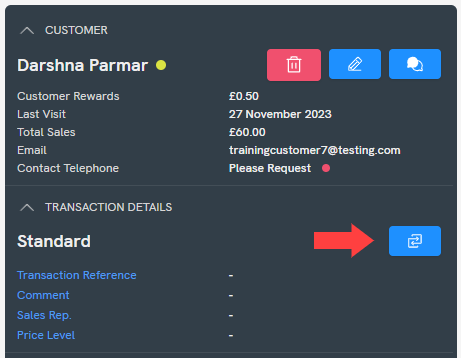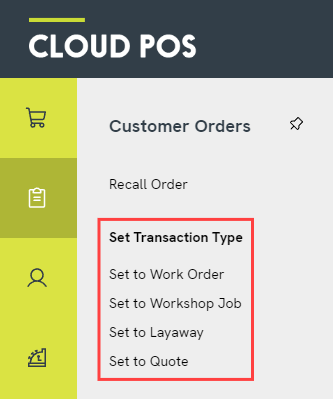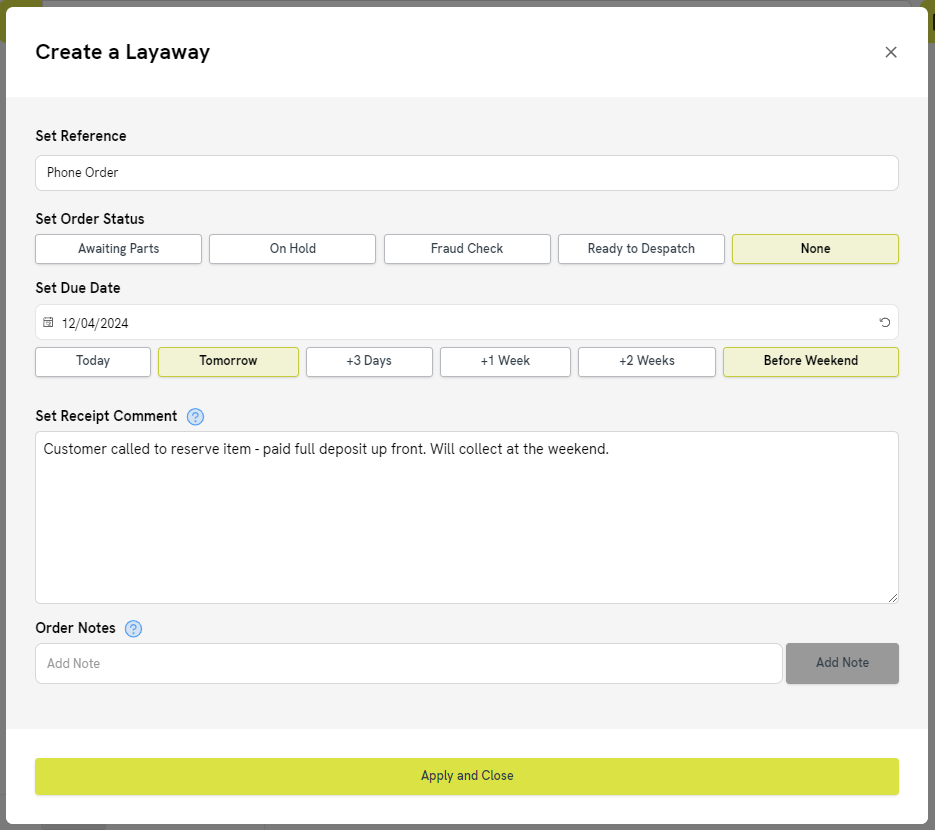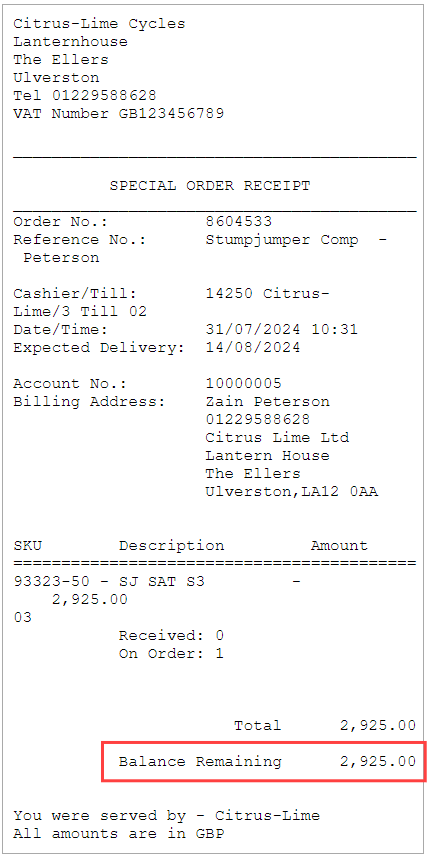Aside from standard sale transactions, there are four other transaction types in Cloud POS for managing customer orders and quotes:
- Special Order
- Workshop Job
- Layaway
- Quote
These transaction types must have a customer set. They allow out of stock items to be added, and you can set a due date for when you aim to fulfil the order.
For more information on these transaction types, please refer to the following article: What are the main Point of Sale Functions?
You can set one of these transaction types either before or after you have added items to the transaction, and before or after you have set the customer.
1) There are two ways to set the transaction type in the Point of Sale.
a) Click the Change Transaction Type button in the transaction summary panel:

OR
b) Click into the Customer Orders menu and click one of the four transaction types from the list:

2) Once you have chosen your transaction type, you will see a window prompting you for some details about the order. This screen is the same for Special Orders, Layaways and Quotes. Creating a Workshop Job provides a couple of additional options, so please refer to the following article for guidance on creating a Workshop Job: How do I create a Workshop Job?
For a Special Order, Layaway or Quote, you will see the following options:

You can complete these options as fully as you like. These are not required fields.
Set Reference: A reference is a title for your Special Order, Layaway or Quote. You will be able to search for the order by its reference. You might want to refer to the most expensive item on the order, such as ‘Montane Phase Jacket'. Alternatively, you might have your own system for creating order references, such as using a particular abbreviation at the start.
Set Order Status: The default order status is ‘None’. Click on one of the other buttons if required. The statuses are shown in the transaction summary panel on the Point of Sale screen. You will also be able to filter by order status when viewing your full order list in the Cloud POS Back Office.
Set Due Date: This is the date by which you aim to fulfil the order for the customer. You will be able to filter by due date when viewing your full order list in the Cloud POS Back Office.
You can set the due date using one of the quick date buttons (Today, Tomorrow, +3 Days etc.), or click on the date to expand a calendar view.
Set Receipt Comment: Comments can be used to make general notes about the order. For example, if the customer has discussed sizing options with you in store, or if they have asked to delay their collection date due to a holiday. Comments will be printed on the receipts related to the order.
Order Notes: Here you can view and add internal notes for this order. These will not be visible to your customer. You can read more on Order Notes here.
3) Once you have entered the required order details, click Apply and Close.
4) You will return to the Point of Sale screen. Make sure that you have set a customer and added the required item(s).
Creating an order from an existing Transaction
Should you find that you need to convert a transaction into a Special Order or Quote for your customer and you have previously assigned serial numbers to products, the serial numbers will be removed on conversion.
Serial numbers are not stored against the order until it is finalised and tendered. You will, however, have the option to add the selected serial numbers as an item comment.

If additional items are added to the Special Order or Workshop Job after it's creation, the same message will be received when you attempted to save the order. Serial numbers will only be assigned against an item on the pick-up of an item.
5) You can now choose if you would like to take a deposit. This is not available for quotes. It is optional for Special Orders and Layaways.
Would you like to take a deposit?
Please refer to the following article for guidance: How do I take a deposit for an order? Once you have entered your deposit amount, the ‘Save Order’ button will change to ‘Tender’, so that you can take the deposit payment from your customer.
Click ‘Tender’ once you are ready to proceed.
Once you have added the item(s) to the order, set the customer and entered any required order details, click ‘Save Order’.
6) When saving a Special Order, Layaway or Quote, you will proceed to the Transaction Options screen, so that you can print and/or email receipts to your customer, if required.
On the receipt, you will see the Balance Remaining which is the amount the customer has left to pay;

7) On the final Transaction Summary screen, you will see the option to Preview Full Size Invoice, if required.
